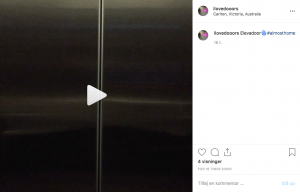In this production report I am going to elaborate the process of making the film for our final project and my thoughts about it. I will explain this week by week.
Before week 9
The process of making this film had already begun when we worked on assignment 2, which we made to be a teaser for this project. We had already established to contact to Ghita Loebenstein, who Is the Creative Producer of the Capitol, and knew she was willing to do an interview.
Week 9
In week nine we finalized the date for the interview with Ghita through email and brainstormed ideas for questions and how the video should turn out. We focused the questions on the Capitols role in Melbourne, the collaboration with ACMI, what events that will be held in the Capitol and what they hope the partnership will mean. Ghita asked us to make five questions and send them to her in advance, so we also did that in this week. We also talked to Kristy from ACMI but unfortunately, she was out of the country and thereby unable to participate in an interview.
Week 10
In week ten we conducted the interview with Ghita and was pleasantly surprised that we were able to do it inside the theatre. There was however a lot of background noise due to the construction workers which was a challenge. The lightning in the theatre was also a bit dark. After recording the interview, we started the editing process. At this early stage our biggest focus was to minimize the background noise and brighten the footage. This we succeeded with to some point by deleting the sound recording from the cameras microphone and only utilizing the audio from the lapel microphone. We also found a feature in Premier Pro that could light up the footage to a satisfying level. After figuring this crucial detail out, we started the editing process. We also found a no copyright song to use for the video. Furthermore, this week we had a lot of contact with ACMI via mail to find the right person and time to do the interview and ended up making an appointment with Alison McCormack, who is head of Commercial and Visitor Services and has been highly involved in the partnership with Capitol. After this we made the questions for Alison from ACMI and they were quite similar to the ones we asked Ghita about. By doing this we hoped that it would make it easier to make a coherent film in terms of what they say. In regard to oral history I believe that Ghita was very good at telling the general story about the theatre and which role it plays in the Melbournian culture.
Week 11
In week eleven we contacted Darren from the Capitol to hear if we could film the interview with Alison here, and luckily it was possible. For the interview with Alison we rented a light and did the interview in the salon of the capitol. Looking back, we should have brought a light to the interview with Ghita, but unfortunately, we were under the impression that we could not rent a light. The interview with Alison went quite well and the background noise was much lower this time. We also did some editing this week. We researched on how to make a good intro for the film and cut out the best parts of the interview that we are using in the final film. We also spent a lot of time deciding on the editing and composition of the film so we had a clear idea and just needed to fill in the different pieces of the footage. Alison was a bit more personal in her interview than Ghita was which means that we got a different type of oral history from Alison because she told a story about her father’s relationship with the Capitol.
Week 12
In week twelve we finished the editing of the film. This was a long process and we had some trouble with the sound which we spend a lot of time trying to improve. We ended up with a film that I think has a lot of potential content-wise but the sound is unfortunately not optimal. What I mean by this is that I actually found that Ghita and Alison gave some really interesting interviews and makes me sad that some of them are a bit interrupted by noise. After finishing we submitted the video to YouTube.
I have learned a lot about oral history in the past twelve weeks and what I think is especially important is that it a story can be different from person to person. Furthermore, I have gained a lot of knowledge on how to conduct interviews and edit films and I have to admit it is more difficult than it looks.
Link to video: https://www.youtube.com/watch?v=NsNlMV3fLLw&feature=youtu.be&fbclid=IwAR2L1KHhS0oZ862muya2MZUiiSv-Ced94DcqenqGHNSo07zlyH3c9YEDtkw








